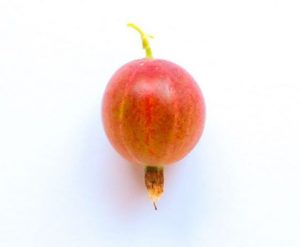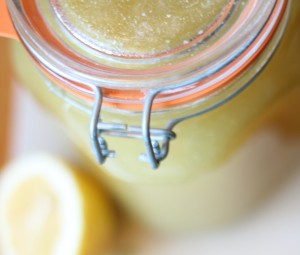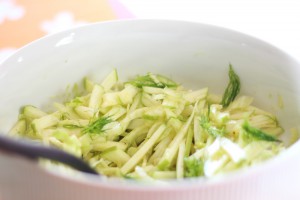Storing vegetables for the winter
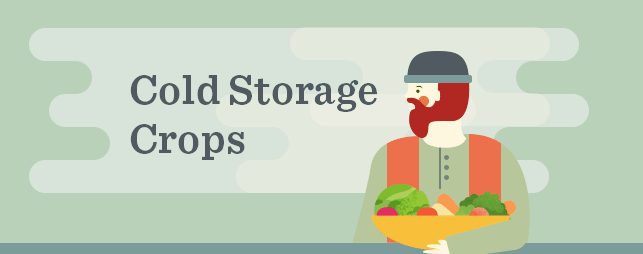
Have you been planting and harvesting your garden throughout the summer but maybe grown a bit too much of that lovely produce? Well there is nothing more sad than have harvested your very own vegetables and then not being able to take care of it all. This is especially a problem when most crops all get done at the same time, and sure pickling and eating a lot can be a solution to this problem but wouldn’t it be better if you could store all those vegetables during the winter and keep eating it during those dark months?
Luckily the people at Fix.com have created a great guide to how you can store your vegetables, and it turns out this is not as hard as you might think. Below is part of the article and some great graphics that will guide you through on the process of storing vegetables for the winter. More graphics and reading are available at the full article at Fix.com, also they have a bunch of other great graphics and articles so take a look around to see what other stuff you might find.
For most of history, people were experts on food preservation because their lives depended on it. Around the turn of the twentieth century, electric refrigeration enabled people to transport food longer distances, sell it in modern supermarkets, and keep it cool at home. As a result, most of us never learned the low-tech food preservation skills once passed down in every culture.
For gardeners or those looking to eat more local foods, it is worth relearning some of those skills – especially winter food storage, the oldest and easiest method. Many fall crops can be safely stored and eaten over the winter months without the use of fancy canning equipment.
Our ancestors built root cellars, underground structures that kept food at a consistently cold temperature year round. Depending on individual needs, it may be worth building a root cellar or another type of food storage system if you don’t have ideal conditions to store winter crops. But before you start digging or building, it’s important to assess whether the chosen dwelling – probably a garage, shed, basement, cellar, or unheated room – already provides the ideal conditions for storing some food.

Source: Fix.com
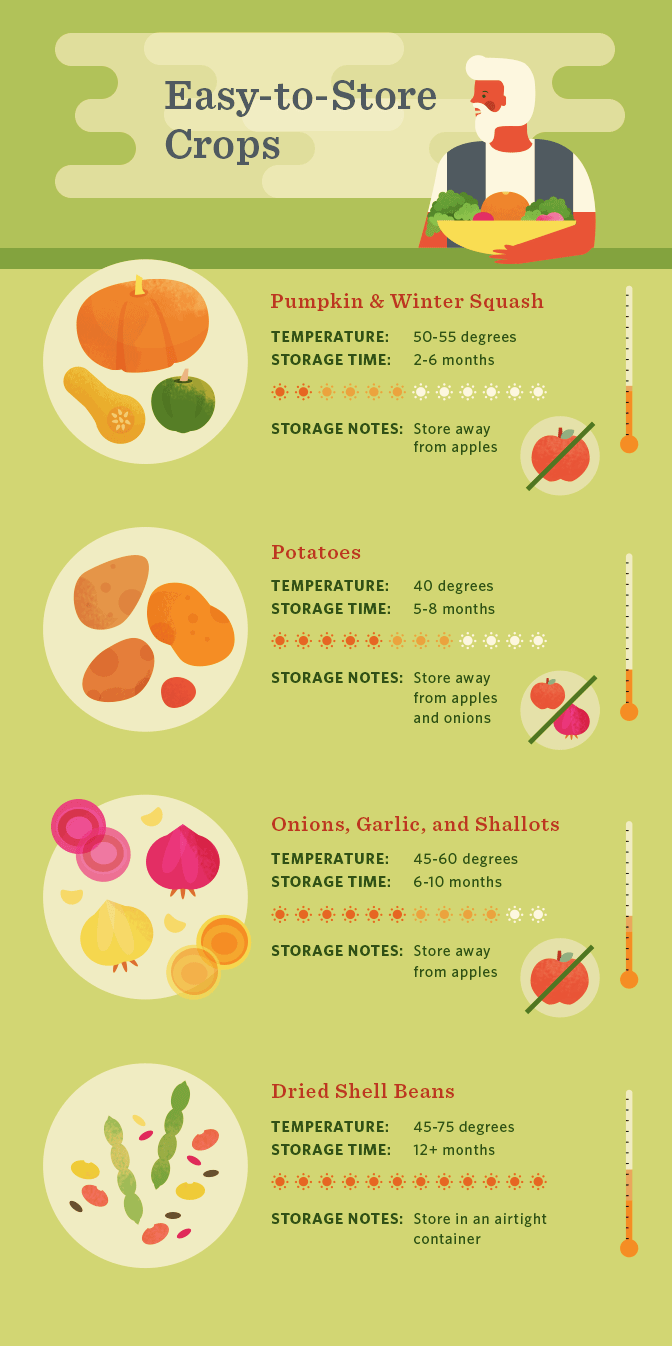
Source: Fix.com
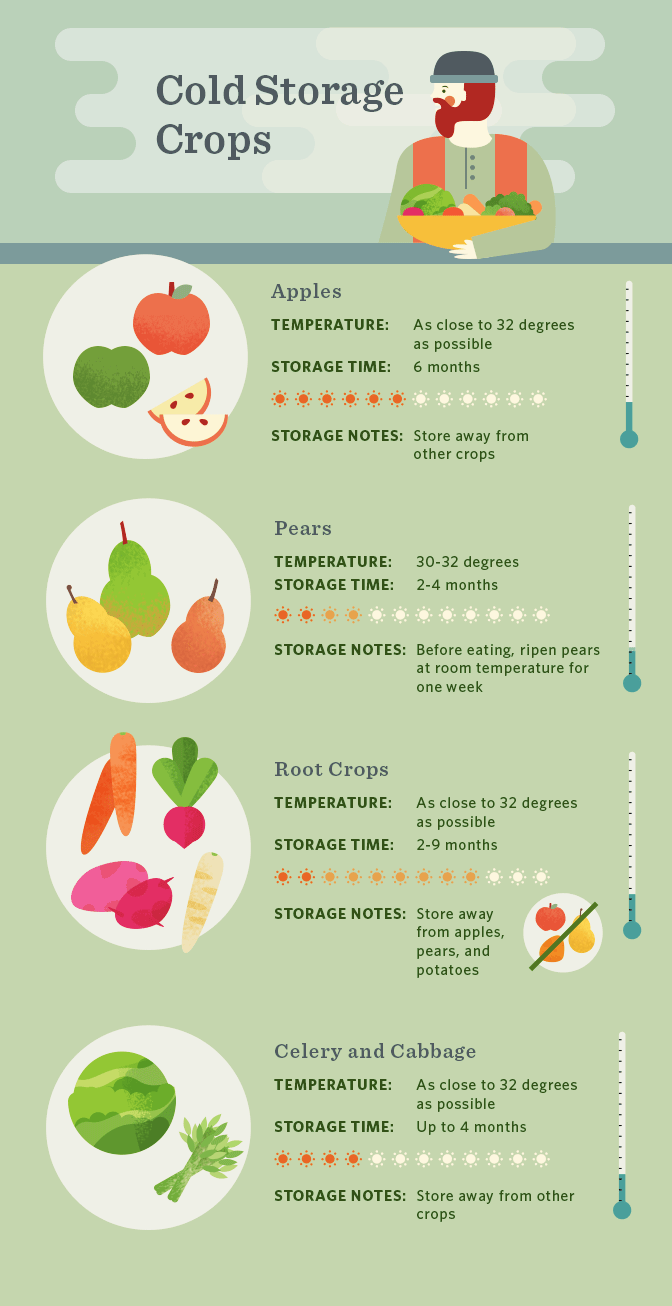
Source: Fix.com
